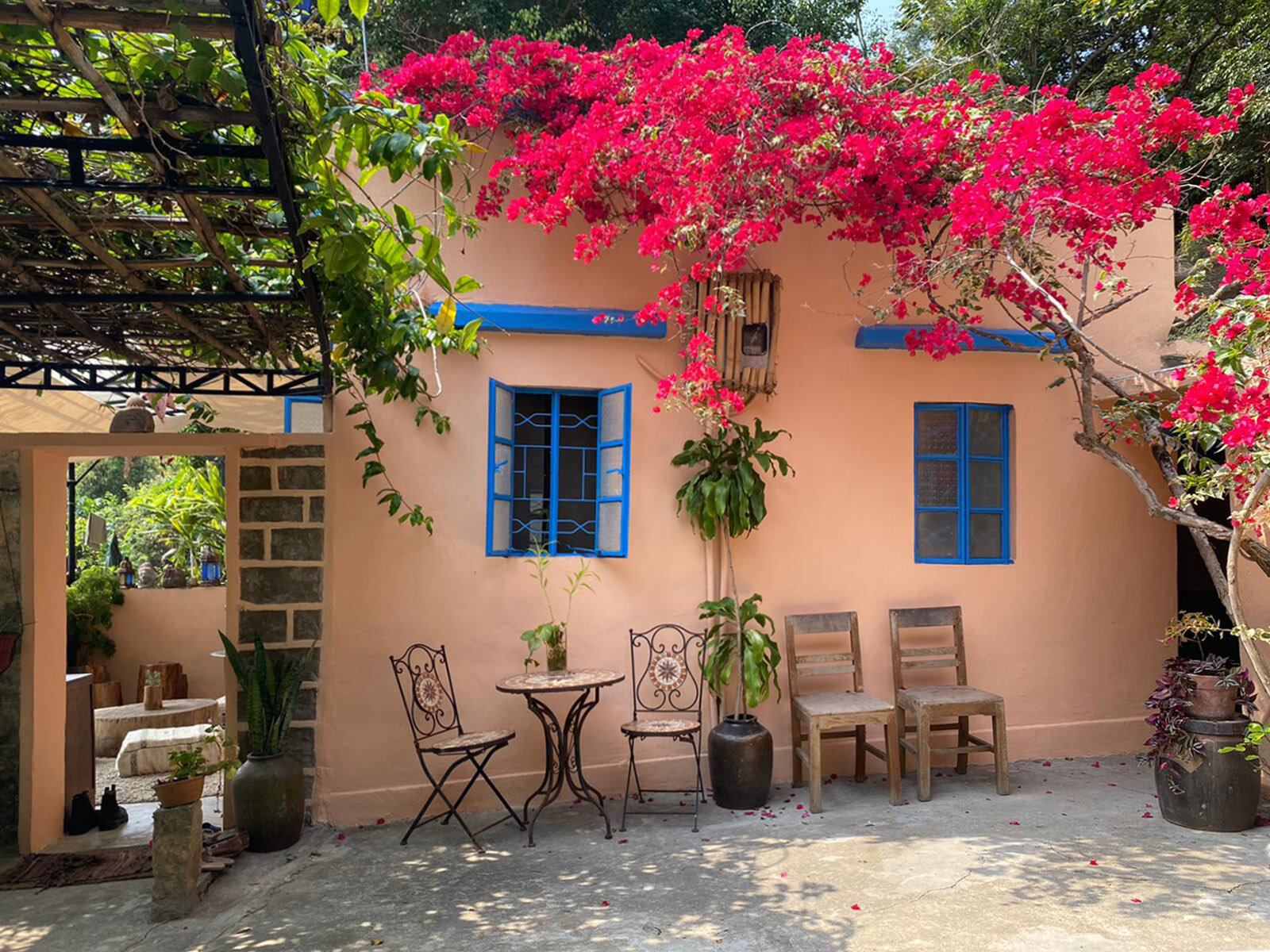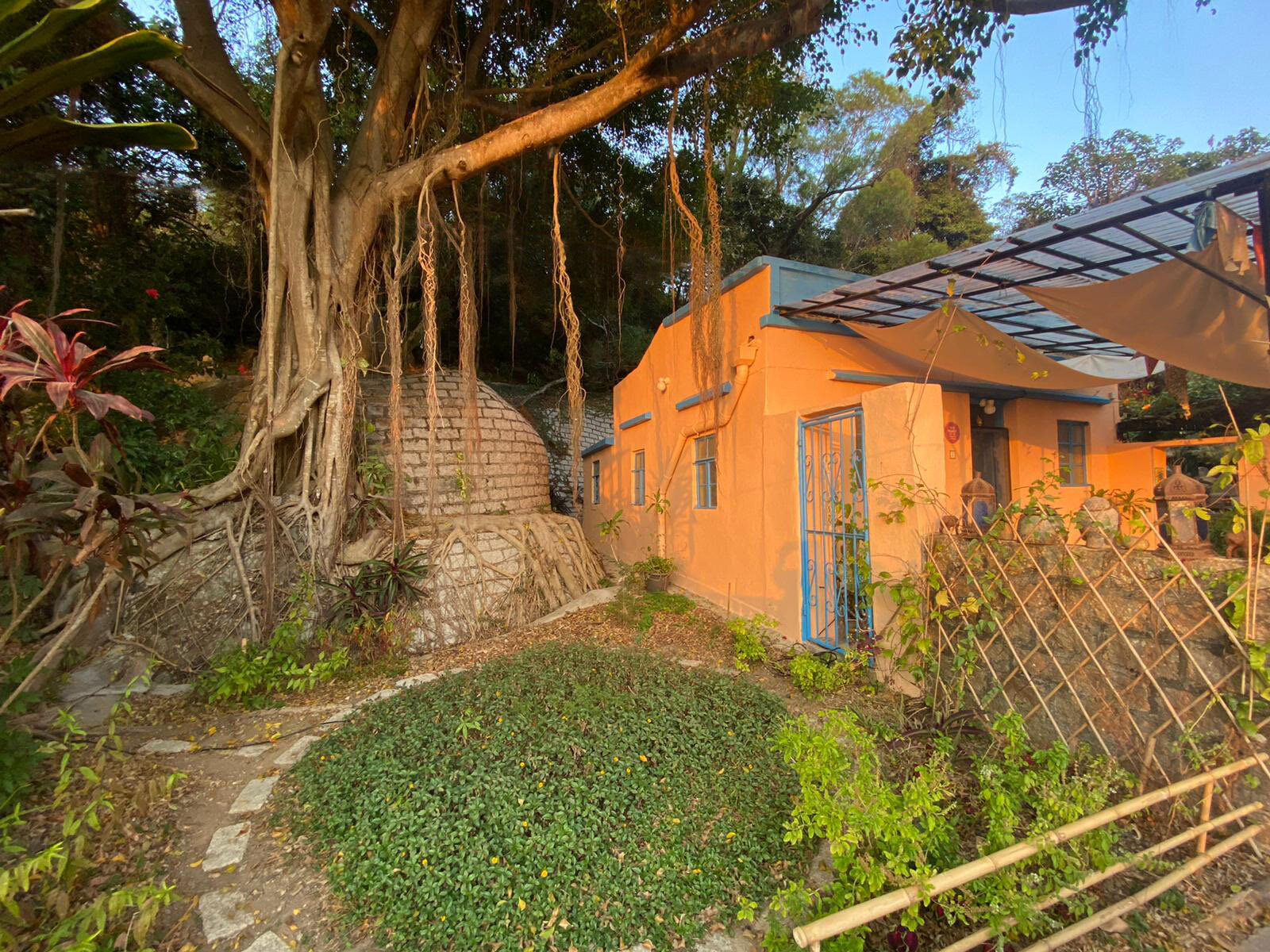BOBSY GAIA – A conversation on Lamma Island, the environment, and living a sustainable life
You can really talk about a place only if you get to know the people who lived there, fell in love with it, and worked to make it better.
Lamma Island is located to the southwest of Hong Kong Island, and it is its third-largest one. I regret that, over the last fifteen years, I’ve been largely ignoring it, paying a visit only for a seafood meal, a meeting with a Hongkonger who knew everything about butterflies, and much earlier, to attend a party at a friend’s place. On that occasion, unaware of the passing of time, I missed the last ferry to Central Pier and got back in the only possible way: on an old, rickety sanpan, the typical flat-bottomed, wooden boat used for fishing. The sampan-lady steered the boat laughing all the way as I, aghast, held on to the metal rail to avoid being swayed right and left while she was riding the big waves. Enveloped by complete darkness, during the ominous and seemingly never-ending journey, I remember saying all the prayers I never said in my life.
Recently, when the Hong Kong Government decided to close all public beaches due to the virus, I visited the island again in search of clear waters and secluded strips of sand. And one day, I happened to find myself at Gaia House - a beautiful, bright-coloured Balinese-style house on top of a cliff overlooking a small beach, completely surrounded by vegetation, adorned with purple bougainvillea and with a metal plaque on the wall that reads “Bob Marley, 1945-1981, Reggae Icon, stayed here”. In this unique abode, the only sounds I perceived were those of waves, birds, and windchimes.
Gaia House’s owner is Bobsy Gaia, whom I had the pleasure to meet again later at the Zen Den, a cool and cosy retreat with low wooden tables, Indonesian batik cushions, and furnished – like Gaia House – with great taste. There, as we lost ourselves in conversation, I completely forgot about being in SoHo (South of Hollywood Road), the very heart of the city. The Zen Den is located on top of one of Bobsy’s two famous plant-based eateries called MANA!, where everything – from leftovers to plates, cutleries, cups, and all – is recycled and composted.
Bobsy’s personal story of resilience and success – as well as his passionate advocating for a more sustainable way of living and for a greener environment – goes back to the early Nineties and it has been featured in countless magazines. For this reason, when we met at the Zen Den, we mainly talked about Lamma Island.
Lamma is a peculiar place, and not only because it’s an island, therefore a microcosm of its own in stark contrast with the hustle and bustle of Hong Kong life. Somehow, it’s the ideal place for people attracted by its laid-back lifestyle, relatively cheaper rental prices and artsy atmosphere: in fact, it hosts a community of hippies, artists, writers, musicians. But as Bobsy says, Lamma was originally a fishing village, with hardly any foreigners until the early Eighties. The first hippies who settled there were mainly British, due to Hong Kong’s colonial history.
Bobsy Gaia arrived in Hong Kong in 1992 with no money, no job, no family. At first, his life gravitated around Hong Kong Island: Mid-levels, the Peak, Lan Kwai Fong, as that was the hipster scene back then. However, due to his long hair and hippy look, everyone kept on asking him “Do you come from Lamma?”.
“Eventually, five months later, I went to Lamma with a friend,” he says “and we hiked from Sok Kwu Wan (in the South) to Yung Shue Wan, the bohemian side, located in the northern part of the island. It was dusk, and the first impression was already special: a couple of Westerners passed by us barefoot; we could hear music being played in an orange-lit apartment. And as we kept walking and reached The Corner Bar (that closed down in 1993). There was live music, and people were playing in the street. It was the feeling of a Greek Island. As my destiny would have it, I found myself moving to Lamma the next day. I lived for a week in the hotel overlooking the ferry pier and saw all the people commuting to Central for work. The community was wide, and I started to connect. The vibe on Lamma Island was definitely different”.
In 1994, Bobsy co-founded the Able Charity foundation, as a response to a big company that wanted to reclaim Power Station Beach in Lamma. From then on, Able Charity’s aim has been to protect Lamma’s environment. In 1996 they started the first tree-planting project on a very eroded part of the island, in the South. The northern part of Lamma was completely barren and deforested too, and so the project expanded. On Earth Day in 1997, thanks to the help of many volunteers coming from all over Hong Kong, they planted the first 2,000 trees and then continued planting in the same location, every year until 2012, with the support of the Hong Kong Government and the Kadoorie Farm & Botanic Garden (KFBG), hoping to see a forest one day. And there is now, indeed, a lush forest of around 50,000 trees.
“Plants are the symbol of regeneration,” Bobsy says, “and they are beneficial in many ways. Therefore, the wisdom of tree-planting started to pay back. After so many years, the new plants, born from the seeds spread by the birds and the wind, are getting stronger and healthier, and around them is more flora, more fauna. It’s a thriving ecosystem. Between 2012 and now, we’ve been maintaining the area, opening trails, pruning the trees, doing typhoon recovery and maintenance work, picking up rubbish. The forest now extends from the West Lamma Channel to the East Lamma Channel. This year we will be studying the forest and its ecosystem, its soil, the health of the trees, which we will start classifying”.
The fear is that all this beauty could potentially be grabbed by property developers, as the forest is classified as “Green Belt (GB)”, but this definition does not exempt it from being utilised for redevelopment. The mission is to re-zone the area into “Conservation Area (CA)” with enough scientific data once collected and submitted to the Government. On the day of our meeting, Bobsy was having dinner with two scientists and academics from the University of Hong Kong: Dr. Billy Hau, an authority on trees, and Dr. Michael Lau, an expert in Romer’s Tree Frog – discovered by science for the first time in Lamma, in 1954. This frog is a highly endangered species native to Hong Kong and it has recently been spotted for the first time in the North Lamma Forest. It’s a very tiny frog emitting a call that sounds like a mix between raindrops and crickets chirping.
“Able Charity’s mission is to do a case study to see how the Romer’s frogs live in the forest,” says Bobsy, “and also how the trees are thriving. Then, after presenting the case - hopefully with a petition from the academics and the public - we will propose to rezone North Lamma before it becomes too attractive to the big developers. This is also part of Able Charity’s mission, and it’s a tough journey ahead”.
Bobsy would also like to establish Organic Art Projects in the forest, where each artist can use what is on offer in the woods to create art. I showed him some pictures of the Bosco Arte Stenico, located in Trentino Alto Adige, in northern Italy, which I visited three years ago. Every year, the organisation in charge promotes competition between visual artists and sculptors, who then create organic art pieces using the natural material offered by the forest only. According to Bobsy, the first step is, again, to protect the forest, and then open up this opportunity for the artists.
The meaning of Yung Shue Wan, where the hippie and artsy people live, is ‘Banyan Tree Bay’. Probably there once used to be an abundance of these big and beautiful trees. I asked Bobsy if he identifies himself with the banyan tree: long aerial roots that fall and anchor to the ground and spread laterally for great distances. Bobsy’s working experience saw him moving from the island to the city centre and his eateries are there, but his heart remains in Lamma, where he can retreat to his charming, lovely hamlet that overlooks the Lamma sea. “I belong to both worlds,” he says. “I feel comfortable as a hippy in Lamma and as a cultural creative change-maker in the city. Banyan trees are symbols of wisdom and stability. Likewise, I feel that my life has become stable and deep-rooted in the last thirty years”.
And, in the last thirty years, Bobsy has done quite a lot, always keeping his belief in the power of trees, in Nature, and in the spiritual Zeitgeist. In the culture of the Melanesians and Polynesians, ‘mana’ is the spiritual life force energy, the healing power that permeates the universe. Anyone or anything can have ‘mana’.
After moving from war-torn Lebanon to England; after the eco-fashion business in Bangkok, the opening of the vegetarian ‘Bookworm Café’ in Lamma (1997) and the ‘Life Café’ in Central (2004); after turning from vegetarian to vegan; Bobsy founded the ‘MANA!’ concept in 2012, in the name of “Diet change, not climate change”. His vegan restaurants use biodegradable packaging and feature plant-based dishes.
“The dominating way to operate a business in the world is all based on the principle that economic wealth is the pinnacle of economic success,” he says. “But this does not translate into happiness, well-being, or peace. My voice and MANA!’s voice are calling on a different story. There is wealth in whole food, in ecological wisdom, in respecting the planet, and protecting the wellbeing of the Earth. Diet change, and not climate change, has been my mantra for a long time, but we lived surrounded by people valuing economic success over everything else. So, it has been hard to make a difference. But now, with the younger generation, there is hope. Material wealth is not the only alternative. The youngsters want to support businesses that are ecological, zero-waste, zero-plastic, and that carry a spiritual message. The audience is growing”.
Bobsy has been a pioneer and, despite the difficulties encountered on the way, since 1989 all his businesses as an entrepreneur have been fully operating respecting the environment: from eco-fashion to charitable environmental work; from tree-planting to publishing environment-related zines; from opening restaurants to creating festivals and holding inspirational talks. All with the same voice: spiritual poverty is far worse than economic poverty.
“Now more and more people are opening vegan restaurants and fast-foods, and more youngsters choose a plant-based diet”, he says, “so I’m confident that things are changing, even if it’s not the time to sit and rest. The big corporations control the food chain and the power lays in how you produce your food. So, globally, there’s a new battle in our hands. It has to do with our diet and the impact that it has on our climate”.
After our conversation, I must admit that I left Bobsy and the Zen-Den with renewed hopes for our beloved planet, and heartened by the power of trees. Quoting Bobsy: “By creating a forest, hope is given. By planting a forest, life is enriched. By setting a living example, people can see and feel the greening of the Earth & thereby empowering proactive change within & without themselves.”
Cover: Bobsy Gaia
Images courtesy of Bobsy Gaia, Able Charity Foundation and MANA!









